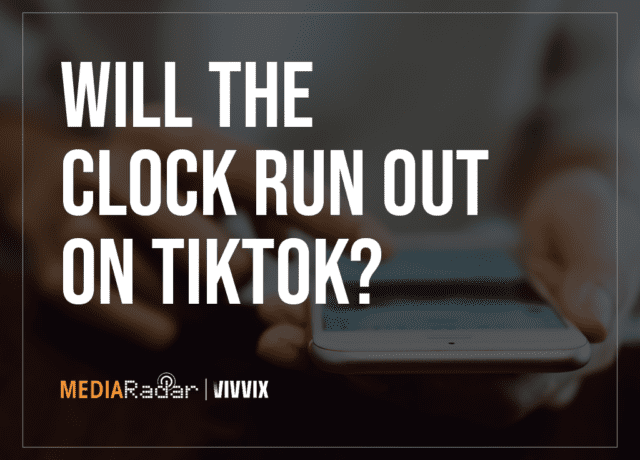Consumers are changing how they interact with media—what does that mean for advertisers, and how are they responding? MediaRadar is here to help you navigate ad sales with the latest tips and data.
Not every lead is bound to become a customer—so how do you determine which leads to focus your sales efforts on?
You engage in lead scoring.
Now, we know lead scoring isn’t anything new—it was the big buzzword over a decade ago.
But lead scoring has come a long way since tech companies started promoting this strategy.
“A number of factors have changed to create a new iteration of lead scoring. The new iteration has been fueled by more advanced data technology, shifted consumer behavior, and improved data management practices,” explains Armando Biondi, CoFounder and CEO of Breadcrumbs.
Modern lead scoring is essential for reps who want to identify high-value leads and act fast to close deals.

What is Lead Scoring?
Lead scoring is a way to assign a quantitative value to leads.
A lead is a potential client that has expressed some form of interest in your company—someone that has made a move toward your company and interacted with your company in some (even minor) way.
Typically, a lead scoring model is set on a 0 to 100 scale, with 100 representing the most valuable, most qualified lead—someone that appears to be the most interested in your company, that also fits the mold of a typical customer.
Lead interactions can take place either online or offline. An online interaction could be a website visit, a blog subscription or a white paper download. An offline interaction could be a response to a direct mail campaign or an in-person interaction at an event or trade show.
While the definition of a lead may sound an awful lot like that of a prospect, the difference is very important.
Lead vs prospect
From a sales rep’s perspective, leads and prospects are very different. They’re at different stages in the sales cycle.
A prospect is simply a lead that has expressed further interest in continuing the conversation with your company beyond their first initial interaction.
Leads become prospects.
From a sales rep’s perspective, prospects will always be pursued, whereas leads may not be.
Leads need to be run through further nurturing before reps fully commit to pursuing them. A prospect’s value is much more defined than a lead’s. In fact, a lead may not have any value—which is what makes lead scoring an essential task for any sales team.
Why Lead Scoring is Important
Lead scoring allows sales representatives to understand who is expressing interest in their service, how the lead is behaving and what actions the sales rep should take. This allows reps to spend their time on leads that are more likely to convert.
Three benefits of lead scoring include:
- Sales reps use time more efficiently: With the right tools, lead scoring helps sales reps assure that they’re reaching out to contacts that have a high potential of being turned into a revenue-generating client.
- A boost in marketing and sales alignment: By coming together to identify the lead scoring process, team members make sure everybody is on the same page about the ideal buyer.
- See sales numbers climb: When sales reps know who to reach out to, have information about lead behavior and know when to reach out to them, they can close bigger deals, faster.
In B2B sales, analytics are table stakes. “From web-crawling to sentiment analysis, outperformers use specialized analytics to dig into individual deals, propensity to buy, and lifetime profitability with greater precision than the average B2B,” reports McKinsey.
To outperform your competitors, it’s essential to invest in sales intelligence models to understand your ideal buyers and who is engaging with your business.
How to Score Your Leads
A lead scoring model essentially ranks a lead based on a combination of their characteristics and actions, as they relate to your company’s ideal target market. Those characteristics and actions are the most important part of a lead scoring model, as they are what actually make up the scores.
Sales teams can use less formal words for their scoring stages – for example, they could consider leads cold, warm or hot.
The scoring weight attached to specific characteristics and actions will vary from company to company, but there are a few different ways that all sales teams should score their leads.
4 Ways to Score Your Leads
1. Demographic or Firmographic Data
Is the lead the type of buyer that your company typically looks for?
Demographic factors could include age, gender, income, location, family, and so on.
If a lead fits the right personal makeup that your company typically sells to, they’ll start off with a higher score. Gender, age, and other factors will carry different weight, so these factors can be scored separately.
In most cases, personal demographic scoring will be more useful for B2C sellers. B2B brands, on the other hand, focus on firmographics.
Firmographic data is essentially the demographic data of companies. Instead of describing individual characteristics of a person, they describe the features of a company. Firmographic data includes:
- Company size
- Industry
- Number of employees
- Annual revenue
- Annual ad spend
- Location
- Type of business (B2B or B2C, product-based or service-based, SaaS)
There are other company characteristics you may want to consider. For example, is your lead working with a competitor of yours? Does your product fill a void for them, or is it simply an improvement of something they already have?
By understanding the firmographic data of the company interacting with your business, you’ll have a better understanding if they are a good fit for nurturing.
2. Offline Behavior
Even though it feels like everything operates online right now, we can’t forget that offline business behavior is real.
Whether companies engage with your business at an event or a sales rep agrees to a phone conversation, these types of behaviors should be included in your lead scoring model.
3. Online Behavior
Online behavior might include whether a lead has visited your site, downloaded resources (like a trend report or case study), or filled out a form.
Your sales team can base a scoring model on which of these actions a lead has taken and the time frame in which they’ve done so.
Perhaps there is a lead that has moved very quickly, from the homepage of your website, to a trend report, and then they requested a demo. Chances are, they are highly engaged, and highly interested in your product or service.
Internet behavior can also include social media behavior. Has your lead interacted with your social media pages? Do they follow your pages? Do they frequently interact with your content?
Furthermore, do they follow and interact with other companies that have similar products to yours? And do they interact with content that falls in line with the interests of your existing clients?
4. Email behavior
Scoring a lead’s email engagement is a great way to determine their value. You can score everything from open rates, to click rates, and especially replies.
Perhaps a lead has downloaded a white paper, so you decide to send them a follow-up email to further engage them. If they respond, they clearly hold high value as a lead, and potentially as a prospect.
With a sales intelligence tool that prides itself on customer service, you can create custom models for evaluating leads and prospects.
Learn how MediaRadar has helped leading media companies like Internet Brands, Acast and The New Yorker equip their sales teams by reading our case studies.
For more updates like this, stay tuned. Subscribe to our blog for sales tips and data from the latest advertising trends.



